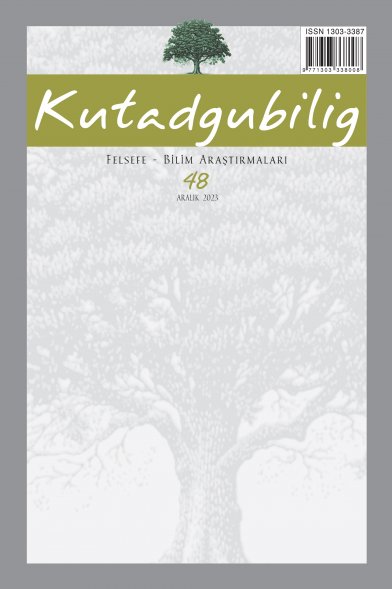HEIDEGGER FELSEFESİNDE TEKNİĞİN ÖZÜNE GİDEN YOL
THE WAY TOWARDS THE ESSENCE OF THE TECHNICS IN THE PHILOSOPHY OF HEIDEGGER
___
Aristoteles; Poetika, 1. Baskı, çev. Samih Rifat, İstanbul: Küçük Kitaplar, 2003.Davis, Bret W.; “Introduction: key concepts in Heidegger’s thinking of being”, Key Concepts: Martin Heidegger, ed. Bret W. Davis, Durham: Acumen Publishing, 2010.
Delice, Didem; “Heidegger’in Tekniğin Kökenine İlişkin Soruşturması”, FLSF: Felsefe ve Sosyal Bilimler Dergisi, ss. 307-328, S. 23, 2017.
Figal, Günter; “Phenomenology: Heidegger after Husserl and the Greeks”, Key Concepts: Martin Heidegger, 1.Edition, ed. Bret W. Davis, Durham: Acumen Publishing, 2010.
Guignon, Charles B.; “Introduction”, The Cambridge Companion to Heidegger, 1.Edition, ed. Charles B. Guignon, Cambridge University Press, 1993.
Gür, Aysun; “Heidegger’de Varolanlar ile Dünyanın İlişkisi Üzerine”, Kaygı: Uludağ Üniver- sitesi Fen-Edebiyat Fakültesi, Felsefe Dergisi, ss. 128-143, S. 28, 2017.
Heidegger, Martin; “The Way to Language”, Basic Writings, David Farrell Krell, New York: Harper Collins Publishers, 1993.
Heidegger, Martin; Nedir Bu Felsefe?, 1. Baskı, çev: Ali Irgat, İstanbul: Afa Yayınları, 1995.
Heidegger, Martin; Tekniğe Yönelik Soru, 1. Baskı, çev. Doğan Özlem, İstanbul: Afa Yayınları, 1997.
Heidegger, Martin; “Dönüş”, Teknik ve Dönüş&Özdeşlik ve Ayrım, 1. Baskı, çev. N. Aça, Ankara: Phar- makon Yayınları, 2015.
Heidegger, Martin; Sanat Eserinin Kökeni, 2. Baskı, çev. Fatih Tepebaşılı, Ankara: De Ki Basım Yayım, 2011.
Heidegger, Martin; Hümanizm Üzerine, 1. Baskı, çev. Yusuf Örnek, Ankara: Türkiye Felsefe Kurumu Ya- yınları, 2013.
Kart, Berfin; “Aristoteles ve Heidegger’in Sanat Kuramlarında ‘Poiesis’ ve ‘Phronesis’”, Kay- gı: Uludağ Üniversitesi Fen-Edebiyat Fakültesi, Felsefe Dergisi, ss.77-88, s.25, 2015.
Platon; Devlet, 8. Baskı, çev. Sabahattin Eyüboğlu, M. Ali Cimcoz, İstanbul: Remzi Kitabevi, 1995.
- ISSN: 1303-3387
- Yayın Aralığı: 2
- Başlangıç: 2002
- Yayıncı: Dergah Yayınları A.Ş.
MÜZİK-SAĞLIK-TOPLUM İLİŞKİSİ: EDİRNE SULTAN II. BAYEZİD DARÜŞŞİFASI ÖRNEĞİ
İSLÂM AHLÂK FELSEFESİ: BİREY VE ÖZGÜRLÜK MERKEZLİ BİR İNCELEME
DAVID HUME’DA AHLÂKIN KAPSAMI VE KONUMU
KRİPTO-POZİTİVİST BİR ÇAĞDA SANATIN İŞLEVİ
AQUİNAS’TAN KANT’A AhlâkIN DOĞAL YASASININ İMKÂNI ÜZERİNE
DOSTLUK NEDEN BİR AHLÂK FELSEFESİ KONUSUDUR?
AHLÂKIN SEKÜLERLEŞMESİNDE DAVİD HUME ETKİSİ
ALİYA İZZETBEGOVİÇ DÜŞÜNCESİNDE AHLÂK PROBLEMİNE GİRİŞ
